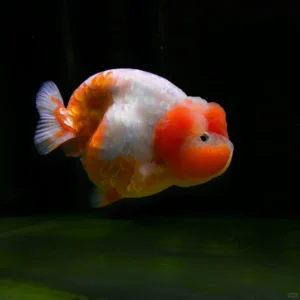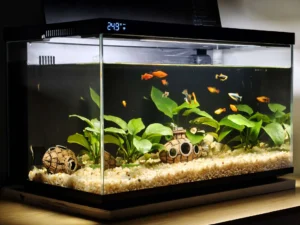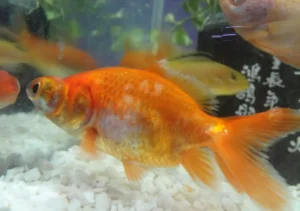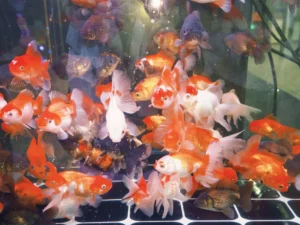Yellow water in aquariums can appear for many reasons. Uneaten food, fish waste, driftwood, lack of water changes, dirty filter media, too much light, or direct sunlight can all affect the water color in your tank. Below are the main causes and practical solutions.
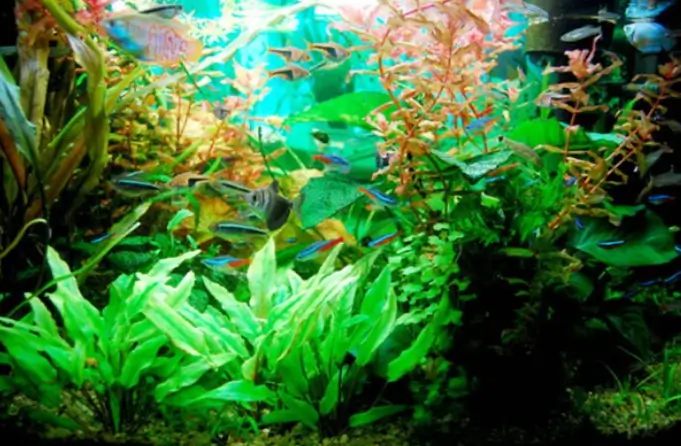
1. Fish Food
Ideally, fish should finish their food within five minutes. Excess food that sinks into the filter can make the water turn yellow. Poor-quality fish food is another factor. Some pellets release color when soaked in water. You can test this easily: prepare two glasses of tap water, add food to one, and wait five to ten minutes. Compare both glasses to see the difference.
Solution: Feed only the right amount of food and choose high-quality brands that do not discolor the water.
2. Fish Waste
Fish waste is the main waste your filter processes. Too much waste in the tank leads to yellow water. The logic is simple: more food means more waste, and both can tint the water yellow.
Solution: Clean your filter sponge regularly and change water on a set schedule. Even if you wash your filter media, without regular water changes the water will still look slightly yellow. Only fresh water restores clarity.
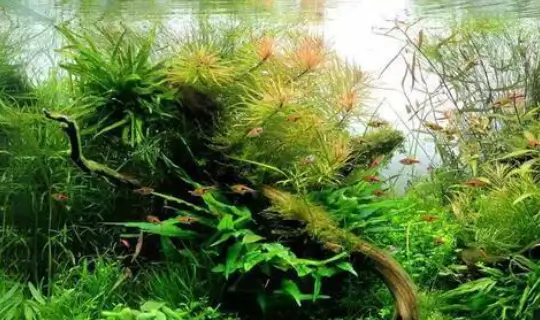
3. Driftwood
Driftwood is a well-known cause of yellow water. Some pieces release tannins for months, even with treatment. For aquascapers, driftwood is both a favorite decoration and a challenge. On the positive side, it softens the water, lowers pH, and releases beneficial trace elements.
Solution: Boil driftwood for several days or soak it for weeks with frequent water changes before placing it in the tank. Regular water changes will gradually reduce discoloration. Over time, the water will look clearer and healthier.

4. Aquarium Lighting
Keeping the lights on 24 hours a day will almost guarantee yellow or green water. Strong lighting encourages algae growth, which turns the water green. Weak lighting often leads to brown algae, which makes the water appear yellow. Normally, aquarium lights should run for only 3–6 hours a day. Even for planted tanks, it is best not to exceed 8 hours.
Solution: Only turn on the lights when you are home to enjoy your fish. Use a timer to control lighting hours automatically. This saves energy and prevents algae growth and yellow water.
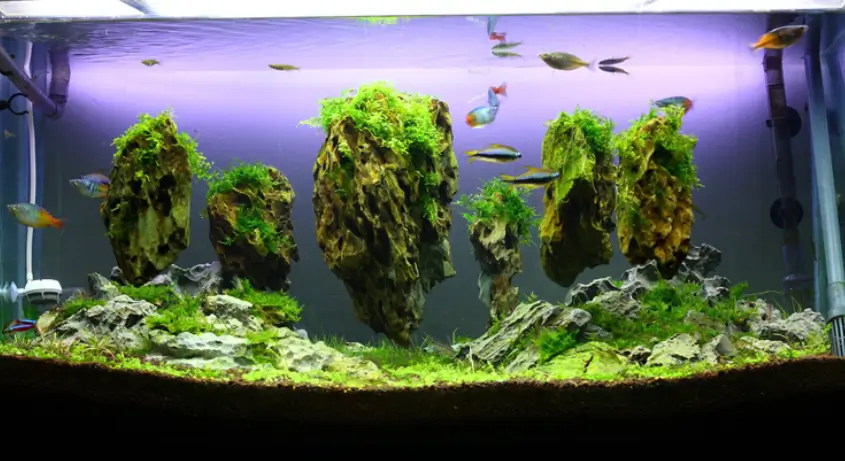
5. Sunlight Exposure
If your tank receives direct sunlight for several hours, algae can bloom quickly, leading to green or yellow water. Sunlight also accelerates water aging and disrupts stability. Even the best filtration system cannot fully fight against strong, constant sunlight.
Solution: Place the tank away from direct sunlight. UV sterilizers can help but will not completely stop yellow or green water. They are best used as support, not the sole solution.
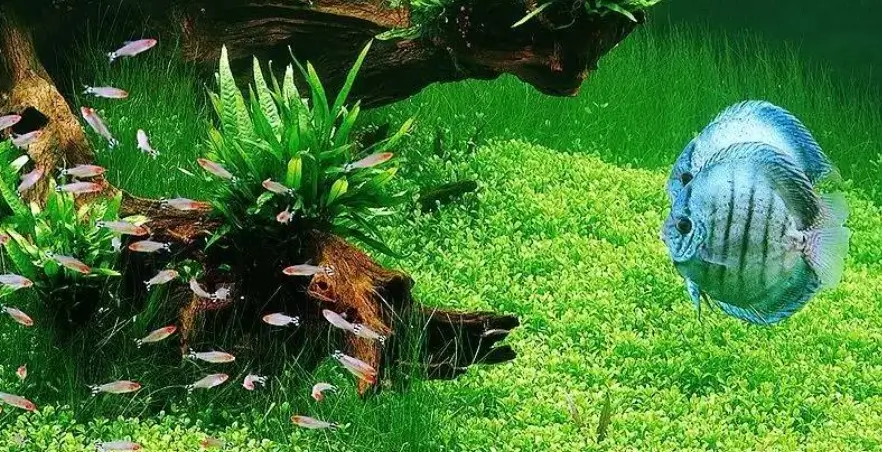
6. Dirty Filter Media
Over time, filters collect waste, dust, and organic debris. Fish waste, leftover food, dead plants, or even small dead fish break down into fine particles. While bacteria handle part of this process, a lot of inorganic residue remains. These particles stick to sponges or settle at the bottom of biological chambers, where slow water flow allows them to accumulate. Left unchecked, this buildup makes the water turn yellow.
Solution: Clean filter media regularly and, if possible, design the system with a drainage pipe for easy waste removal. Regular maintenance keeps the filter efficient and the water clear.
Final Tip
To prevent yellow water, follow three golden rules: feed wisely, change water regularly, and maintain your filter. With consistent care, your aquarium will stay clean, healthy, and crystal clear.

